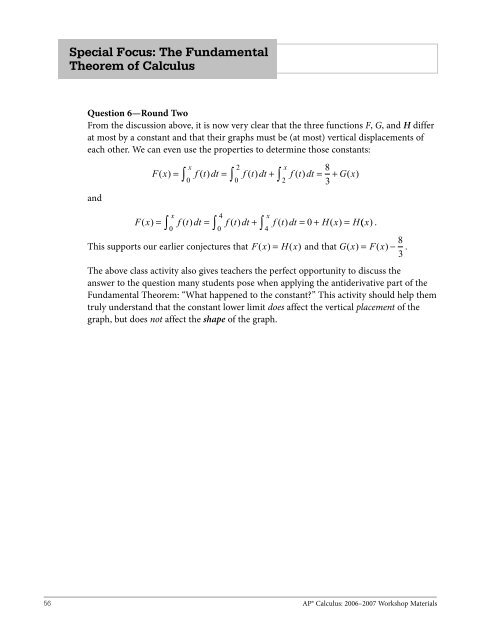AP Calculus
Create successful ePaper yourself
Turn your PDF publications into a flip-book with our unique Google optimized e-Paper software.
Special Focus: The Fundamental<br />
Theorem of <strong>Calculus</strong><br />
Question 6—Round Two<br />
From the discussion above, it is now very clear that the three functions F, G, and H differ<br />
at most by a constant and that their graphs must be (at most) vertical displacements of<br />
each other. We can even use the properties to determine those constants:<br />
and<br />
x<br />
2<br />
x 8<br />
F( x) = ∫ f ( t) dt = ∫ f ( t) dt + ∫ f ( t) dt = + G( x)<br />
0 0<br />
2 3<br />
x<br />
∫ ∫ ∫<br />
F( x) = f ( t) dt = f ( t) dt + f ( t) dt = 0 + H( x)<br />
= H( x ) .<br />
0 0<br />
4<br />
This supports our earlier conjectures that F( x) = H( x)<br />
and that G( x) = F( x)<br />
− 8 3 .<br />
The above class activity also gives teachers the perfect opportunity to discuss the<br />
answer to the question many students pose when applying the antiderivative part of the<br />
Fundamental Theorem: “What happened to the constant?” This activity should help them<br />
truly understand that the constant lower limit does affect the vertical placement of the<br />
graph, but does not affect the shape of the graph.<br />
x<br />
4<br />
56<br />
<strong>AP</strong>® <strong>Calculus</strong>: 2006–2007 Workshop Materials


